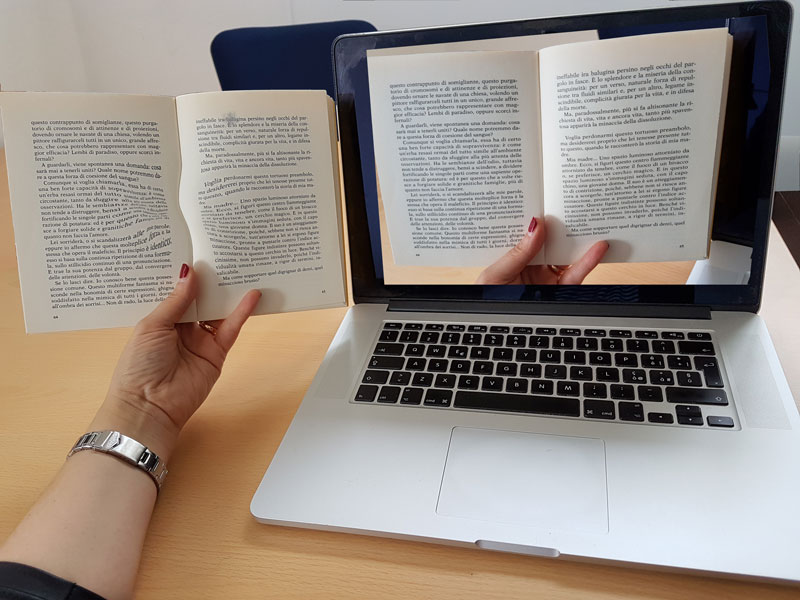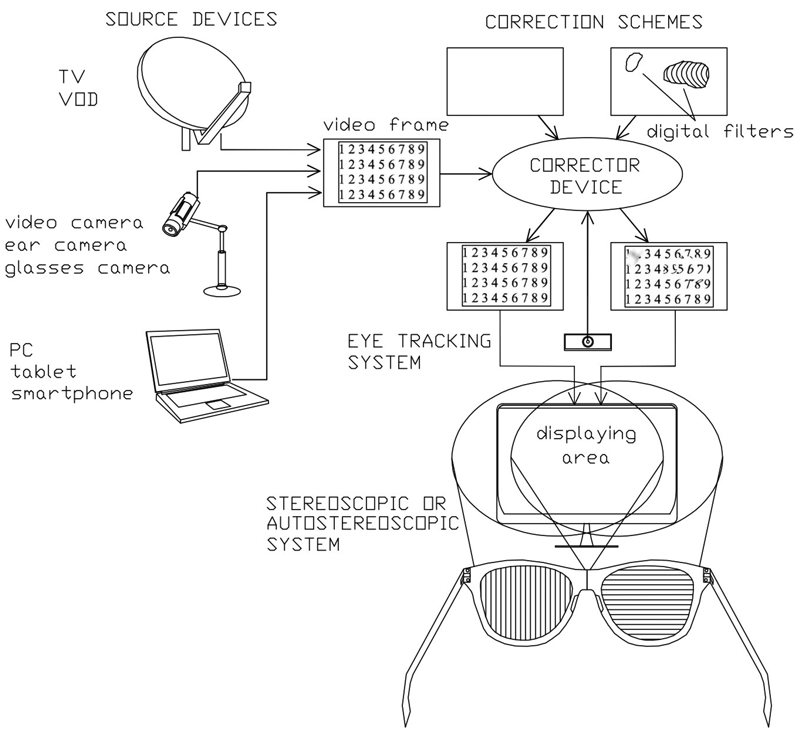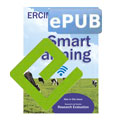by Carmelo Lodato and Patrizia Ribino (ICAR-CNR)
Vitreoretinal diseases are widespread and on the rise. These pathologies can cause the degeneration of parts of the retina, and in particular of the macula. The visual perception, compromised by these ocular pathologies, can be improved with our non-therapeutic corrective technology, incorporated into a display device, which is viewed by the user in binocular vision.
We are developing a technology [1] that improves binocular vision in people suffering from eye dysfunctions that cause the perception of defects in various portions of the visual field, in central or peripheral vision, when the user looks at a video played on a display device, as shown in Figure 1.

Figure 1: A possible implementation of the technology: A computer helps a user withdistorted vision to read a book by improving their visual perception.
This type of disorder can derive, for example, from vitreoretinal diseases of diverse origins or traumas. Some ocular pathologies such as macular senile degenerations (AMD) are very widespread, especially in older adults. These pathologies can cause visual defects in various areas of the visual field and often compromise the central vision. For example, a person suffering from AMD might see a portion of an image as distorted or blurred, and, in especially severe cases, the perceived image may be partially deprived of visual information.
Therapeutic or non-therapeutic remedies are available. Therapeutic approaches are often invasive, and have a reduced success rate if not promptly performed. Conversely, non-therapeutic approaches may include vision aids that can improve vision without intervening in their physiological causes. Magnifiers or projectors, which improve vision by enlarging an image, are common vision aids for some daily activities, such as reading. Other more sophisticated solutions try to approach visual distortion issues [2, 3].
Our method uses techniques of 3D visualisation, eye tracking, and image processing (see Figure 2). It uses two corrective schemes, one for each eye, containing digital filters configured according to the visual defects of the user. Each corrective scheme is customised defining shape, size, and position of the image portions affected by defects. Moreover, sets of digital filters are associated with the portions of the image mentioned above to obtain various local effects. The binocular vision is improved by appropriately applying the corrective schemes to the video frames to be conveyed to the user’s eyes.
 Figure 2: An informal representation of the main system components.
Figure 2: An informal representation of the main system components.
A corrector device transforms an input video stream, coming from a video source, in two distinct flows applying the respective corrective scheme to each frame of the input stream. Each corrective scheme is applied in a dynamic mode congruently to the instantaneous variations of the visual fixation point and the position of the head revealed by the eye tracking system. A stereoscopic or autostereoscopic system, therefore, allows each video flow to be conveyed to the corresponding eye.
This solution can significantly improve quality of life, reducing the impact of the social costs and loss of productivity typically associated with this type of disorder. This is especially true for older people for whom even partial recovery of some daily activities in binocular vision could be of utmost importance. It is a non-invasive solution, and it allows the correct binocular visual perception even when more defects are localised in corresponding retinal points, providing that the visual impairment does not involve a loss of information. The technology can also significantly improve vision in the case of a loss of information, provided that the loss of information relates to non-corresponding retinal points.
The technology could be incorporated into vision aids consisting of an apparatus connected to a CCTV such as a magnifier for close up viewing, distance viewing and self-viewing, or in other devices that are connected to a television signal receiver or a computer’s video output and provide vision aids for watching TV or using a computer. Other embodiments can give support for diagnosis and for monitoring the progression of the disease.
References:
[1] C. Lodato, P. Ribino. “Method for modifying at least one frame video of a digital video stream to be displayed on a displaying area and related system”, International patent Application No. PCT/IT2017/000089.
[2] Kohn et al. “Characterization and correction of macular distortion” US Patent No. 8,708,495. Apr. 29, 2014
[3 Dalal et al. “Central vision impairment compensation” US Patent No. 2014/0210970. Jul. 31, 2014.
Please contact:
Carmelo Lodato, ICAR-CNR, Italy
+39 091 8031065











